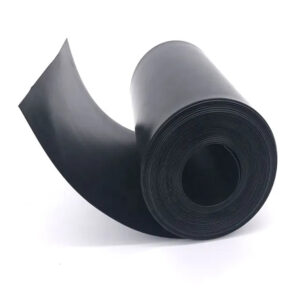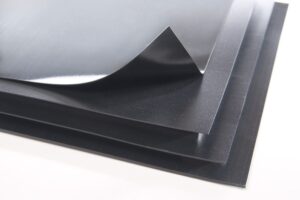What is the use of geomembrane quality testing?
Quality testing of geomembranes is very important for engineering and environmental applications. It has the following main uses:
Guarantee project quality: Geomembranes are widely used for anti-seepage, isolation and protection in the fields of civil engineering, water conservancy engineering, environmental protection and waste treatment. By quality testing geomembranes, you can ensure they meet design and specification requirements, improving the reliability and long-term performance of your project.
Prevent environmental pollution: Geomembranes are used in environmental protection to prevent harmful substances from leaking into soil and water bodies. Quality testing can ensure the anti-seepage performance of the geomembrane, effectively prevent environmental pollution and protect the natural environment.
Improve project efficiency: Qualified geomembrane can reduce project maintenance and repair costs and extend the service life of the project. Quality testing can ensure that the geomembrane can function properly in the project, reducing the need for later maintenance and repair.
Protecting infrastructure: In infrastructure such as roads, tunnels, dams and ponds, geomembranes are used to enhance the stability and impermeability of soil. Through quality testing, the performance of the geomembrane can be ensured and soil instability and disasters can be prevented.
Meet regulatory requirements: In some countries and regions, projects using geomembranes must comply with regulations and standards. Quality testing is an important means to ensure legal compliance of the project and helps avoid potential legal issues.
Research and Development: Quality testing of geomembranes is also useful in the field of research and development. It can help researchers understand the performance of different types of geomembranes, improve materials and designs, and promote the development of geomembrane technology.
In summary, quality testing of geomembranes helps ensure the reliability, environmental protection and compliance of engineering projects. These tests can be performed before installation, during construction and after the project is completed to ensure that the geomembrane is performing as expected and meeting the required project requirements.

Geomembrane Chemical Degradation Test
Chemical degradation testing of geomembranes is a testing method used to evaluate whether geomembranes will degrade under specific chemical environments. This test is often used to determine whether a geomembrane loses its physical properties or chemical stability after exposure to specific chemicals. The following are the steps and considerations for general geomembrane chemical degradation testing:
step:
Sample preparation: Cut representative specimens from the geomembrane, usually in standard sizes and shapes. The number and size of specimens shall be determined according to the requirements of the test method.
Chemical substance preparation: Prepare chemicals for testing, which are usually chemicals that the geomembrane may come into contact with in actual applications, such as acids, alkalis, solvents, etc. Determine the concentration and temperature of the test liquid to meet the test requirements.
Specimen Exposure: Expose the geomembrane specimen to the test chemicals, ensuring complete contact between the specimens. Typically, specimens are exposed to chemicals for a certain period of time to simulate actual application conditions.
Observe degradation: After the sample is exposed for a period of time, observe whether the geomembrane sample has degraded. Degradation is typically assessed by observing changes in appearance, texture, color, and physical properties of the specimen.
Data logging: Record the extent of degradation and any other relevant information such as exposure time, temperature, chemical concentration, etc.
Performance evaluation: Based on the test results, evaluate the chemical degradation performance of the geomembrane. Typically, the results of the tests are compared against specific requirements and determined to determine compliance with specification or design requirements.
Things to consider:
Testing should be performed under standardized experimental conditions to ensure accuracy and comparability of results.
The selection of test chemicals should be based on the chemicals to which the geomembrane may be exposed in practical applications. This can be determined based on project requirements.
The number and size of specimens should comply with the requirements of the test method and be strictly controlled to ensure repeatability.
All necessary parameters should be recorded during testing for subsequent analysis and reporting.
Chemical degradation testing of geomembranes helps determine their stability in specific chemical environments, which is important for engineering design and material selection, especially in applications involving contact of geomembranes with chemicals. If the geomembrane is susceptible to degradation in certain chemical environments, additional measures may be needed to protect the geomembrane or to select materials that are more chemically resistant.

Soak test of geomembrane
The immersion test of geomembranes is a test method used to evaluate the performance and stability of geomembranes in liquids. This test is commonly used to determine how geomembranes will perform when exposed to liquids or water, particularly in engineering and environmental applications. The following are general steps and considerations for conducting a geomembrane soak test:
step:
Sample preparation: Cut representative specimens from the geomembrane, usually in standard sizes and shapes. The number and size of specimens shall be determined according to the requirements of the test method.
Immersion Liquid Preparation: Prepare the immersion liquid for testing, this can be water or another liquid, depending on the purpose of the test. The temperature, soaking time and concentration (if applicable) of the soaking solution should be set according to the test requirements.
Sample soaking: Completely immerse the geomembrane sample into the soaking liquid to ensure full contact between the sample and the liquid. Typically, specimens are soaked in the soaking solution for a certain period of time to simulate actual application conditions.
Observe changes: After soaking for a period of time, regularly observe changes in the appearance, texture, color and physical properties of the geomembrane sample. This can include checking for damage, embrittlement, deformation or other abnormalities.
Soak cycles: Soak testing can be conducted over multiple cycles, each cycle potentially having different soak conditions. This can help evaluate the long-term performance of the geomembrane.
Data recording: record any changes in the geomembrane sample during the soaking process, and record soaking time, temperature and other test parameters.
Performance evaluation: Based on the test results, evaluate the soaking performance and stability of the geomembrane. Results may be compared to specifications or design requirements to determine compliance.
Things to consider:
Testing should be performed under standardized experimental conditions to ensure accuracy and comparability of results.
The choice of test fluid should be based on the fluids to which the geomembrane may be exposed in practical applications. This can be determined based on the needs of the specific project.
The number and size of specimens should comply with the requirements of the test method and be strictly controlled to ensure repeatability.
All necessary parameters should be recorded during testing for subsequent analysis and reporting.
Immersion testing of geomembranes helps evaluate their durability and performance stability in liquid environments, which is very important for geomembrane selection and design in engineering and environmental applications. If the geomembrane does not maintain its properties in liquids, additional measures or the selection of a more suitable material may be necessary.
Author

Founded in 2002, Tinhy's team focuses on the manufacturing, marketing, installation, application and research and development of geosynthetic materials.
View all posts






